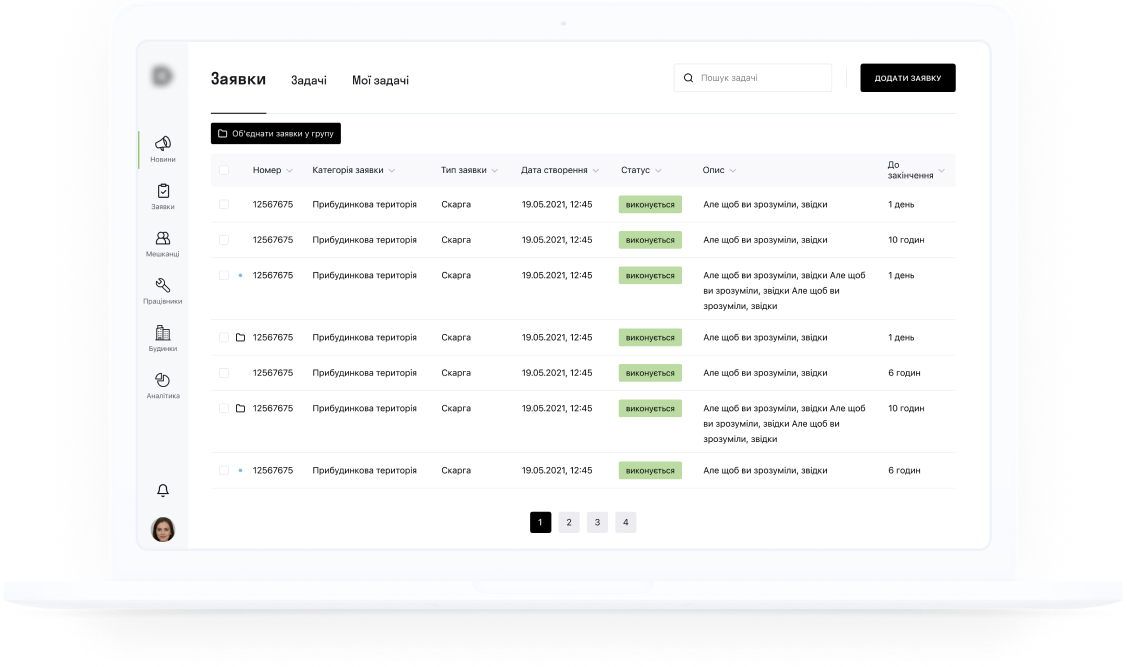If you want to establish the most efficient management of the real estate and all related specifics – accounting records, client cards, 2D/3D models, etc., you definitely need special software that gathers all the aspects in a single optimized system. How to make a real estate management system and how much does property management software cost on average nowadays? Let’s talk about that.
What Is a Real Estate Property Management System in a Nutshell?
All in all, what traits does common property management database software have? Basically, these types of systems usually feature:
- tenant data cards;
- real estate object data and visualization cards;
- tools for communicating with tenants (via email or platform built-in chats);
- accounting tools (that helps manage utility bills, financial deposits, expenses, and payment history);
- online payment systems;
- a generator of digital keys and/or digital signature.
Basic Steps of Property Management Software Development
When it comes to property management app development from scratch, things may get quite complicated. The thing is, such solutions, as a rule, are tailored to the business requirements of a particular customer. So there are no template solutions that you could customize according to your needs.
Of course, there are readymade software products in the niche, but their UX and functionality may not actually fit the primary needs of your business. That’s why you can build your own, individual solution by hiring specialized experts that will go step by step and:
- define your main workflow pain points and formalize the major things that get in the way of high productivity;
- analyze existing competitive commercial solutions (perhaps in your case it would be wise to use an open source SaaS solution);
- compose specifications (set of features and such) for the future product;
- plan through and initiate the UX development (a crucial stage when it comes to real estate, as lots of functionality, intuitivity, and accessibility must be granted in the long run);
- handle the real estate or rental management system development full-cycle (backend, frontend, business logic);
- deploy the software and provide further tech support.
Discover the TOP-10 Real Estate APIs making property technology smarter and simpler
Property Management Software Development Cycle
In a broader sense, your usual cycle of property management software development will include the following important aspects to be handled.
1.Digital payments
The integration of gateways for electronic payments can significantly increase the level of UX and reduce the number of necessary business actions. In addition, automated synchronization with the account management module usually takes place, which means that there are no more risks of not being able to “balance out the debit with the loan” and losing sight of some item of income or expenses.
2.Database connection
Obviously, in view of its specific data-accumulating nature, custom property management systems cannot do without databases. Usually, open-source SQL or MySQL solutions serve best for these purposes.
3.Implementation of property management software features
And the most difficult part – you or your hired developers need to build modules that implement the application business logic. The following set of features is usually incorporated by every other real estate management solution out there.
Must-have Real Estate Property Management Software Features
As you embark on the journey of creating a real estate property management system, understanding the essential features that make up a comprehensive and efficient solution is crucial. Also, the functionality you are planning to include has a significant impact on the cost.
Digital payments
The integration of gateways for electronic payments can significantly increase the level of UX and reduce the number of necessary business actions. In addition, automated synchronization with the account management module usually takes place, which means that there are no more risks of not being able to “balance out the debit with the loan” and losing sight of some item of income or expenses.
Accounting
This module should contain financial management tools for working with loans, rental payments, your bank accounts, debts, etc. In all likelihood, you will have to interconnect it with the vast majority of other essential modules.
Case Study: DIM9000

Tenants management
Typically, this module is presented as a virtual file cabinet with data on all tenants. In this case, it is very important for a developer to carefully think over which fields should be included in each card (last and first name, address, date of entry, amount of paid rent, amount of debt, contract period, amount of utility bills, etc.).
Real estate object management
Similarly, you will also need a “file cabinet” with real estate data. The top skill of the developers in this aspect will be the integration of 3D visualization elements so that your agents can directly demonstrate all the features and advantages of a particular object to the potential buyers or tenants.
Analytics & forecasting
Yet another crucial and very helpful module should include analytics tools that will help you understand how successful your business is, what its progress compared to the previous quarter is, etc.
Communication between managers & tenants
Usually, a good system should provide several communication channels: it can be email, online chat built into the platform or regular SMS messaging. Tools for mass distribution and planning of calls/messages will come in more than handy as well.
Calendar
A built-in calendar will allow agents working through real estate property management software to conveniently schedule meetings with tenants, create rent collection reminders, and such.
Dynamic pricing tools
A tool for dynamic pricing is an extremely useful feature to help compare existing market trends and your property prices. This will save you from routine work and make constant manual correction of prices obsolete.
Let’s build custom software for your business needs
Digital key & signature generator
Last but not least, a generator of digital keys and signatures is a must. As a rule, readymade solutions are used for this, which are connected to the platform through some real estate management system open-source API.
Cost to Develop a Custom Property Management System
What about the cost to develop a custom property management system? Ultimately, all these steps result in requiring roughly the following amount of man-hours:
UX/UI: 120–160 man-hours
Frontend: 700–800 man-hours
Backend: 500–600 man-hours
In the long run, depending on developer rates, the budget to create rental management software starts from $60,000 while an MVP can be completed for $30,000–$37,000. Contact us if you decide to build a real estate property management system from scratch – we have tremendous experience in creating such solutions and can send you a demo version (sample) of one of our projects in the nice so that you see what we have to offer for yourself.
Final Words
Understanding the cost of creating a real estate property management system is essential for planning and budgeting purposes. From development and customization to features and integrations, various factors influence the overall cost. By carefully considering your unique requirements and budget, you can create a powerful property management system that caters to your specific needs.
Are you looking to efficiently create a rental management system? Hire experienced, highly-qualified developers our company has to offer to get a top-quality solution at an affordable budget. How much does it cost exactly? Contact us right now to find out and discuss other details of your project.

Our team is dedicated to delivering high-quality services and achieving results that exceed clients' expectations. Let’s discuss how we can help your business succeed.


SHARE: